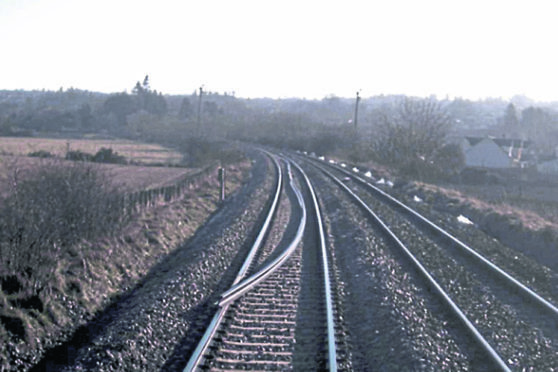Poor communication among maintenance workers led to an Inverness train travelling at 53mph crashing into a piece of rail left on a track – creating a “potentially catastrophic outcome”, investigators have found.
The speed of the impact pushed the 425ft rail – the length of a football pitch – off the track at Cradlehall, Inverness, and actually prevented the derailment of the London East Coast Train on the outskirts of the city.
A probe into the collision found that there was a lack of communication and a failure by maintenance staff into knowing who was actually in charge of the work on February 25.
A report by the Rail Accident Investigation Branch (RAIB), issued yesterday, said: “This incident shows how an omission at a site of work with a perceived low risk can still result in a potentially catastrophic outcome.
“The incident demonstrates the importance of the person in charge making sure that suitable arrangements are in place to confirm that the line is clear and safe for the passage of trains, and that these arrangements are properly implemented.”
Following the drama in February, the RAIB issued urgent safety advice to Network Rail and the workers involved in the engineering works were suspended from front-line operations while an investigation by Network Rail was carried out.
The collision happened at around 9.47am, and the RAIB report said: “The rail had been moved during engineering work which took place the previous night.
“The planned work was straightforward, involving the dropping of materials and movement of rails. This was the first train to pass over the route that day.
“The train pushed the whole length of rail aside into the cess and so did not derail.
“Had circumstances been slightly different there is little doubt that the impact from the rail could have derailed the train, resulting in a far more serious accident.”
The report states that two of the senior workers on site had believed the other had responsibility to check the site and declare it safe for running trains, but neither checked with each other regarding this.
It added that Network Rail was advised to take urgent steps to “review the effectiveness of the actions it had taken to address the risk of objects being left on the line after engineering work, and to implement measures to ensure the safety of the line”.
A Network Rail spokesman said: “The safety of our customers should never be put at risk and we have learned from this incident, putting additional measures in place to prevent a similar accident occurring in Scotland in the future.”
